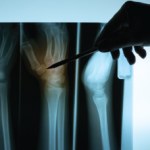Dr. McGowan notes that for patients at risk of fractures, the benefits of medication far outweigh the risks. Worries about side effects “are overblown,” she says. “They’re quite rare.”
“We had success in reducing hip fractures in the past. There’s loads of opportunities to change the curve,” says Dr. McGowan.
ad goes here:advert-1
ADVERTISEMENT
SCROLL TO CONTINUE
Reference
- Michael Lewiecki E, Wright NC, Curtis JR, et al. Hip fracture trends in the United States, 2002 to 2015. Osteoporos Int. 2017 Dec 27. doi: 10.1007/s00198-017-4345-0. [Epub ahead of print]

